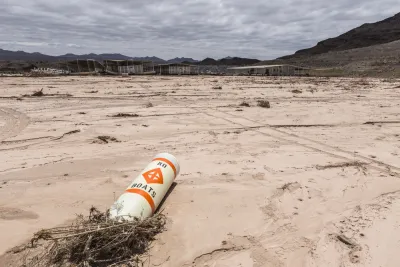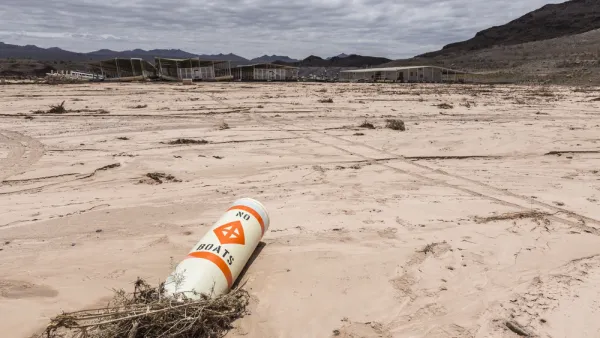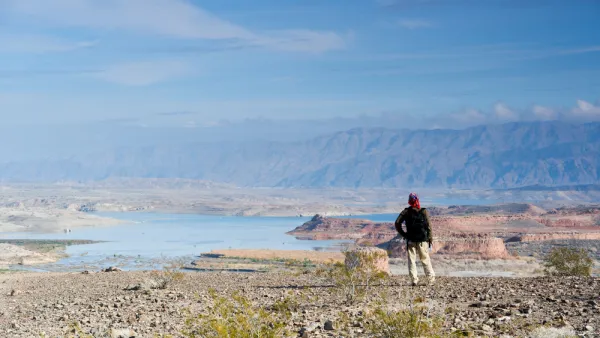Two case studies exemplify the extreme economic and legal pressures surrounding water supply in the state of Arizona.

"Serious water shortages on the Colorado River could be less than two years away, according to new federal estimates," according to an article by Matt Weiser.
"Yet after 19 years of drought, just 500 farmers in one Arizona county may decide the fate of the entire Southwest: By holding tight to their own temporary water supply, they could stall a conservation plan designed to save the entire region from water shortages."
The article focuses on Pinal County, the 54th-largest farming county in the country and the third largest in the state, where about 540 farms use irrigation delivered via the Arizona Water project, a 336-mile canal built by the U.S. Bureau of Water Reclamation in 1993 to divert water from the Colorado River.
"Under a proposed drought contingency plan (DCP) aimed at saving Arizona residents from severe water shortages, Pinal County farmers could lose access to all their Colorado River water," reports Weiser.
Although the local irrigation districts and farmers are fighting the decision, Weiser says preventing the DCP will only prolong the inevitable—the farmers will run out of water in 12 years because of the temporary water deal the irrigation districts signed in 2004. It turns out, the Pinal County farmers are the most "junior" users of the Colorado River.
The Pinal County case isn't the only Arizona water news to catch our attention this month. A separate article by Bret Jaspers shifts the action to Maricopa County, where a water rights dispute known as the Gila River General Adjudication has dragged on since the 1970s. "Through the adjudication process, [a Maricopa County Superior Court] judge will decide on claims to water from several Arizona rivers – or water pumped from wells close to the rivers."
The reason for the dispute reveals another key aspect of water rights in Arizona, which is that only a few areas have long-term deals for water. In 1980, Arizona designated five Active Management Areas – Prescott, Phoenix, Pinal, Tucson and Santa Cruz – that are heavily reliant on the mining of groundwater. Each AMA pursues a goal of stabilizing water tables under the Arizona Groundwater Code," writes Jasper. Without an AMA, there's little certainty about where water will be delivered. That arrangement is constantly pressure by the state's ongoing growth.
FULL STORY: Why One Arizona County Could Upend the Southwest’s Drought Plan

National Parks Layoffs Will Cause Communities to Lose Billions
Thousands of essential park workers were laid off this week, just before the busy spring break season.

Retro-silient?: America’s First “Eco-burb,” The Woodlands Turns 50
A master-planned community north of Houston offers lessons on green infrastructure and resilient design, but falls short of its founder’s lofty affordability and walkability goals.

Delivering for America Plan Will Downgrade Mail Service in at Least 49.5 Percent of Zip Codes
Republican and Democrat lawmakers criticize the plan for its disproportionate negative impact on rural communities.

Test News Post 1
This is a summary

Test News Headline 46
Test for the image on the front page.

Balancing Bombs and Butterflies: How the National Guard Protects a Rare Species
The National Guard at Fort Indiantown Gap uses GIS technology and land management strategies to balance military training with conservation efforts, ensuring the survival of the rare eastern regal fritillary butterfly.
Urban Design for Planners 1: Software Tools
This six-course series explores essential urban design concepts using open source software and equips planners with the tools they need to participate fully in the urban design process.
Planning for Universal Design
Learn the tools for implementing Universal Design in planning regulations.
EMC Planning Group, Inc.
Planetizen
Planetizen
Mpact (formerly Rail~Volution)
Great Falls Development Authority, Inc.
HUDs Office of Policy Development and Research
NYU Wagner Graduate School of Public Service





























